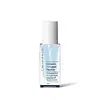What's inside
What's inside
 Key Ingredients
Key Ingredients

 Benefits
Benefits

 Concerns
Concerns

 Ingredients Side-by-side
Ingredients Side-by-side

Water
Skin ConditioningDimethyl Isosorbide
SolventHexylene Glycol
EmulsifyingPropylene Glycol
HumectantGlycerin
HumectantPanthenol
Skin ConditioningCopper Tripeptide-1
Skin ConditioningFerulic Acid
AntimicrobialDipropylene Glycol
HumectantHydroxypropyl Cyclodextrin
MaskingPolydextrose
Humectant1,2-Hexanediol
Skin ConditioningEctoin
Skin ConditioningCyclodextrin
AbsorbentAsiaticoside
AntioxidantAllantoin
Skin ConditioningSodium Hyaluronate
HumectantPhenoxyethanol
PreservativeEthylhexylglycerin
Skin ConditioningGluconolactone
Skin ConditioningHydroxyethylcellulose
Emulsion StabilisingCopper Sulfate
Skin ConditioningWater, Dimethyl Isosorbide, Hexylene Glycol, Propylene Glycol, Glycerin, Panthenol, Copper Tripeptide-1, Ferulic Acid, Dipropylene Glycol, Hydroxypropyl Cyclodextrin, Polydextrose, 1,2-Hexanediol, Ectoin, Cyclodextrin, Asiaticoside, Allantoin, Sodium Hyaluronate, Phenoxyethanol, Ethylhexylglycerin, Gluconolactone, Hydroxyethylcellulose, Copper Sulfate
Ingredients Explained
These ingredients are found in both products.
Ingredients higher up in an ingredient list are typically present in a larger amount.
1,2-Hexanediol is a synthetic liquid and another multi-functional powerhouse.
It is a:
- Humectant, drawing moisture into the skin
- Emollient, helping to soften skin
- Solvent, dispersing and stabilizing formulas
- Preservative booster, enhancing the antimicrobial activity of other preservatives
Allantoin is a soothing ingredient known for its protective and moisturizingg properties. Because of this, it is often added to products with strong active ingredients.
Studies show higher concentrations of this ingredient can promote wound healing.
Though it can be derived from the comfrey plant, allantoin is produced synthetically for cosmetic products to ensure purity.
Learn more about AllantoinPropylene Glycol is an odorless, colorless liquid. As a humectant, it helps skin retain moisture. It also aids in delivering active ingredients.
Another role of this ingredient is preventing a product from melting or freezing. Propylene glycol also adds antimicrobrial properties to a product, elongating product lifespan.
This ingredient is considered an organic alcohol and commonly added into both cosmetics and foods.
Those with sensitive skin or conditions may develop a rash when using this ingredient.
Learn more about Propylene GlycolSodium Hyaluronate is hyaluronic acid's salt form. It is commonly derived from the sodium salt of hyaluronic acid.
Like hyaluronic acid, it is great at holding water and acts as a humectant. This makes it a great skin hydrating ingredient.
Sodium Hyaluronate is naturally occurring in our bodies and is mostly found in eye fluid and joints.
These are some other common types of Hyaluronic Acid:
Learn more about Sodium HyaluronateWater. It's the most common cosmetic ingredient of all. You'll usually see it at the top of ingredient lists, meaning that it makes up the largest part of the product.
So why is it so popular? Water most often acts as a solvent - this means that it helps dissolve other ingredients into the formulation.
You'll also recognize water as that liquid we all need to stay alive. If you see this, drink a glass of water. Stay hydrated!
Learn more about Water